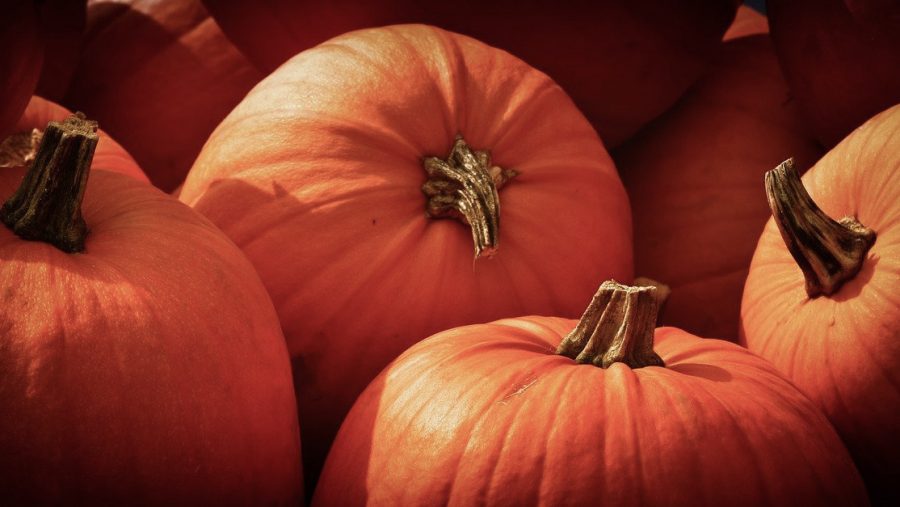Fall in St. Louis means it’s time to embrace the Jewishness of the pumpkin
Published September 27, 2022
Dear Reader,
Fall has officially begun, and it appears the summer heat that has endured here in St. Louis is finally gone. It’s time now to think about fall-like things, Rosh Hashanah, Yom, Kippur, long sleeve shirts and sweaters, colorful leaves, October baseball and of course pumpkins.
Pumpkins? Yes, pumpkins. Yes, for two reasons. First, this weekend is the opening of pick-your-own pumpkin season at Eckert’s Farms, and because pumpkins have played a very important role in Jewish life long before they became associated with fall events like Halloween and holidays like Thanksgiving.
ADVERTISEMENT
Jews and pumpkins
In the 16th century, one of the first crops brought back from the New World to Europe was the pumpkin. The gourd was easy to grow and stored well during cold winters. In her book “ The Book of Jewish Food,” Claudia Roden writes that since it first appeared in Italy, pumpkin has been associated with the Jews.
“Ravioli filled with pumpkin — a familiar dish to anyone who frequents Italian restaurants at this time of year — was originally a Sephardic creation. Italian Jews also developed recipes for pumpkin puree, pumpkin flan, and pumpkin fritters, a Hanukkah delicacy,” wrote Roden.
Pumpkins are featured in many Sephardic recipes. It is tradition, among Sephardic Jews, to eat something containing pumpkin for Rosh Hashanah, the Jewish New Year.
According to MyJewishLearning.com, many Sephardic communities developed their own pumpkin specialties. A jam or sweet spread made with pumpkin was common throughout the Sephardic world, especially as a Rosh Hashanah delicacy. Pumpkin was also commonly used in soups and stews, just as it is today. In addition to these ubiquitous dishes, each Sephardic community adapted pumpkin — which is nothing if not versatile — to its own cuisine and paired it with the ingredients available to them.
Pumpkins and Jewish cooking
ADVERTISEMENT
Leah Koenig, the author of “Modern Jewish Cooking,” writes that early acceptance of the pumpkin by Jews was important for the future of New World foods.
“Sometimes, Jewish communities inadvertently helped normalize unfamiliar ingredients and helped usher them into wider acceptance over time,” writes Koenig. Not only was this true for pumpkin, but for many other New World vegetables as well, from artichokes to tomatoes.
Pumpkins in Jewish text
Though pumpkins are not mentioned in the Torah specifically, they do appear a handful of times in the Mishnah and the Talmud.
According to Jteach.org, in the Talmud, Tractate Sukkah 56b, Abaye said: “A young pumpkin (in hand) is better than a full grown one (in the field).”
Talmud, Tractate Berachot 48a Rabbah said to [Abaye and Rava], “To whom do we bless [i.e. say Grace After Meals]?” They replied, “The All-merciful.”
“And where does the All-merciful dwell?” Rava pointed upwards to the ceiling; Abaye went outside and pointed towards the heavens. Rabbah said to them, “Both of you are Rabbis; for that is what the proverb says, ‘Every pumpkin is known by its stem.’”
Mishnah Shabbat 17:6 (about actions which are permissible on Shabbat) “If a stone sits in a pumpkin one may draw water with it [the pumpkin] if the stone does not fall out, but one may not draw water with it [if the stone] does [fall out]. [If] a vine-branch is tied to a pitcher, water may be drawn with it on Shabbat.”
Time to embrace pumpkins
So, as we kick off the year 5783, don’t forget to embrace this fun part of our heritage both as Americans and as Jews. In honor of how our Sephardic ancestors used pumpkins in a wide variety of dishes, I hope we can get creative this year with how we use and think about pumpkins. How about a new twist on pumpkin pie, or pumpkin bread? Please keep me posted if you do.
Pick your own
The pick-your-own season run throughout October. Guests can visit any of the Eckert’s farms to pick their perfect Halloween pumpkins. Eckert’s Millstadt location has additional attractions of private bonfire sites and haunted wagon rides.
Belleville, Millstadt & Grafton Farms | Select Days from Sept. 24-Oct. 30
- For generations, Eckert’s has been a premier pick-your-own pumpkin destination. Guests can visit the pumpkin patch on the farm to pick the perfect fall squash. Pick-your-own pumpkins are available with a field access pass to Belleville and Grafton and an admission ticket to Eckert’s Millstadt farm. Field access passes and tickets can be purchased on Eckert’s website.
- Starting on Sept. 24, pick-your-own pumpkins will be available daily at Belleville, Tuesdays through Sundays at Grafton, and Wednesdays through Sundays at Millstadt. All customers must pay for a field access pass + $0.79 per pound for pick-your-own pumpkins.
For more information on Eckert’s, visit the website.
















